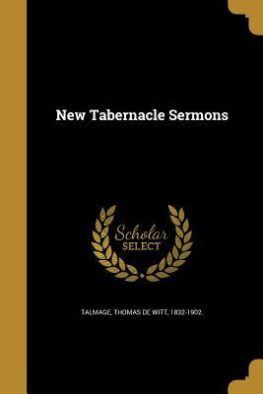Robert Hamill Nassau - Where Animals Talk: West African Folk Lore Tales
Here you can read online Robert Hamill Nassau - Where Animals Talk: West African Folk Lore Tales full text of the book (entire story) in english for free. Download pdf and epub, get meaning, cover and reviews about this ebook. year: 2018, publisher: Creative Media Partners, LLC, genre: Detective and thriller. Description of the work, (preface) as well as reviews are available. Best literature library LitArk.com created for fans of good reading and offers a wide selection of genres:
Romance novel
Science fiction
Adventure
Detective
Science
History
Home and family
Prose
Art
Politics
Computer
Non-fiction
Religion
Business
Children
Humor
Choose a favorite category and find really read worthwhile books. Enjoy immersion in the world of imagination, feel the emotions of the characters or learn something new for yourself, make an fascinating discovery.

- Book:Where Animals Talk: West African Folk Lore Tales
- Author:
- Publisher:Creative Media Partners, LLC
- Genre:
- Year:2018
- Rating:4 / 5
- Favourites:Add to favourites
- Your mark:
Where Animals Talk: West African Folk Lore Tales: summary, description and annotation
We offer to read an annotation, description, summary or preface (depends on what the author of the book "Where Animals Talk: West African Folk Lore Tales" wrote himself). If you haven't found the necessary information about the book — write in the comments, we will try to find it.
This work has been selected by scholars as being culturally important, and is part of the knowledge base of civilization as we know it. This work was reproduced from the original artifact, and remains as true to the original work as possible. Therefore, you will see the original copyright references, library stamps (as most of these works have been housed in our most important libraries around the world), and other notations in the work.
This work is in the public domain in the United States of America, and possibly other nations. Within the United States, you may freely copy and distribute this work, as no entity (individual or corporate) has a copyright on the body of the work.
As a reproduction of a historical artifact, this work may contain missing or blurred pages, poor pictures, errant marks, etc. Scholars believe, and we concur, that this work is important enough to be preserved, reproduced, and made generally available to the public. We appreciate your support of the preservation process, and thank you for being an important part of keeping this knowledge alive and relevant.
Robert Hamill Nassau: author's other books
Who wrote Where Animals Talk: West African Folk Lore Tales? Find out the surname, the name of the author of the book and a list of all author's works by series.


